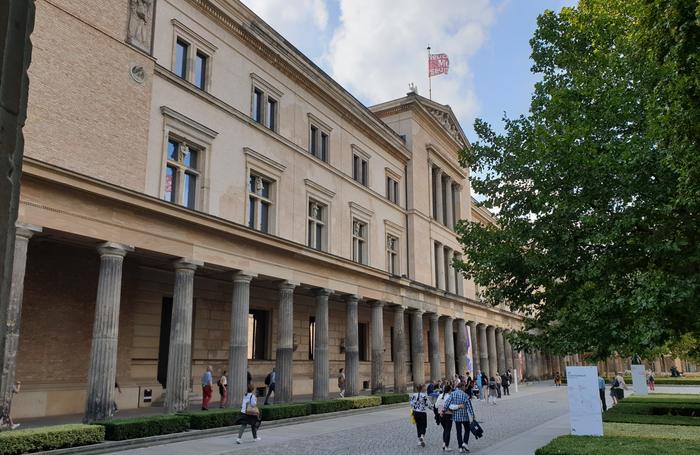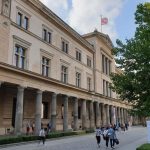Museum Island is one of the main attractions of Berlin and one of the most important museum centers in the world.
This area, where the city of Berlin was born in the Middle Ages with its two twin settlements of Berlin and Cölln, today houses 5 of the most important museums in the world and was declared a UNESCO World Heritage Site in 1999.
The Spree river surrounds this portion of land, an island in fact, on which between 1824 and 1930 the citadel of science and the arts was erected that had been desired by the Prussian rulers, inspired by the noble educational ideals of the Enlightenment.
It was King Friedrich Wilhelm III who first wanted to set up a “public and well selected art collection”, where he exhibited finds and works from the private collections of the royal family, thus inaugurating the oldest museum in Prussia: the Altes Museum.
After its construction was completed in 1830, King Friedrich Wilhelm IV then advocated for a place for developing knowledge and a taste for beauty; a place comparable to the ancient Roman Forum and that stood in the heart of the city, so as to be accessible to the entire population.
This philanthropic project led to the construction of the New Museum, followed by the ancient Art Gallery, the Bode Museum, and finally the Pergamon Museum: buildings created to house some of the most important masterpieces of the ancient and modern West.
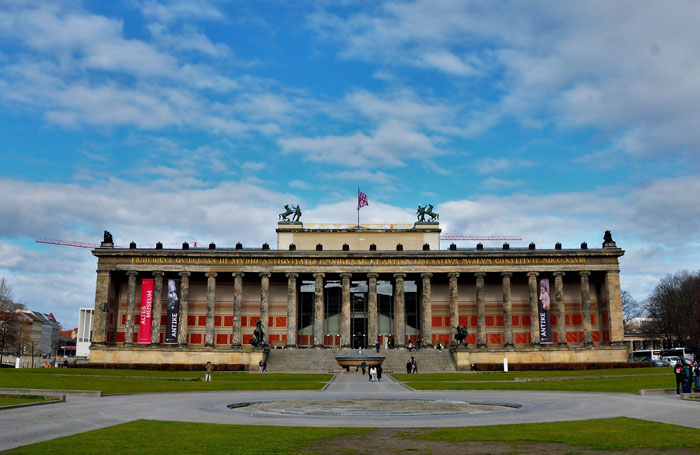
In the Nazi era, within the context of the redesigning of Berlin by the architect Albert Speer, these ancient and elegant museums ran the risk of having other colossal buildings built next to them. The outbreak of the Second World War prevented the completion of these projects, but damaged more than 70% of the buildings on the island.
Located in East Berlin, the Island was only partially restored in 1950 and its precious collections were redistributed among Berlin museums.
After German reunification, the treasures of the island finally came to be reunited and a proper restoration of its architectural jewels was initiated. The architect David Chipperfield, who is also responsible for the renovation of the Neues Museum, is working to create a corridor between the museums that allows an uninterrupted journey between ancient and modern works of art on the island, as originally conceived by the architect Alfred Boden.
Let yourself be charmed by a walk through the colonnades and monumental rooms of these wonderful palaces and immerse yourself in 6000 years of history and culture!
Museum Island Berlin: ALTES MUSEUM
It is the oldest museum not only in Berlin, but in the whole of Germany.
This elegant neoclassical building, with an 87-meter portico supported by Ionic columns, welcomes you to Museum Island next to the Berlin Cathedral. Built between 1824 and 1830, the Altes Museum is the masterpiece of architect Karl Friedrich Schinkel and it’s no coincidence that it stands next to the palaces of power of the early 19th century:
the Castle where the monarchy resided, the Berlin Cathedral, a symbol of the importance of the Protestant Church, and the Armory (Zeughaus), the headquarters of the army.
Inside is the largest collection of Etruscan works in the world, as well as finds from ancient Greece, from the Cyclades to Crete and Mycenae.
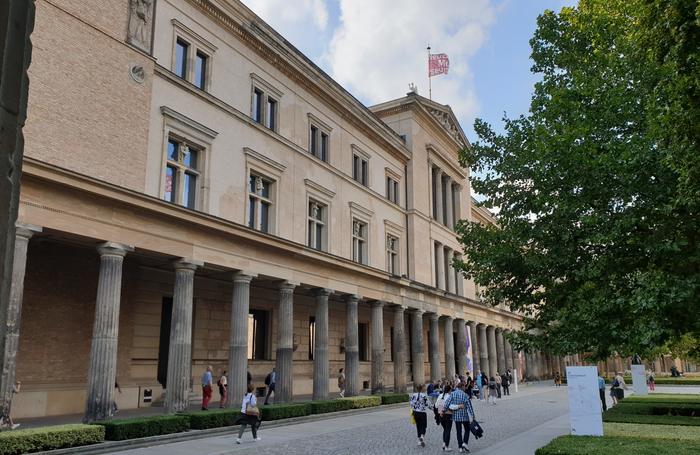
Museum Island Berlin: NEUES MUSEUM
Despite having suffered the greatest damage during the Second World War compared to the other museums on the Island – the GDR government even considered demolition, the Neues Museum was reborn in 2009, after 10 years of work, thanks to architect David Chipperfield.
Originally built in 1841 by Friedrich August Stüler, its displays include prehistoric objects from ancient Egypt. Not to be missed is a visit to the bust of the Egyptian queen Nefertiti, found in 1912 by the German archaeologist Ludwig Borchardt.
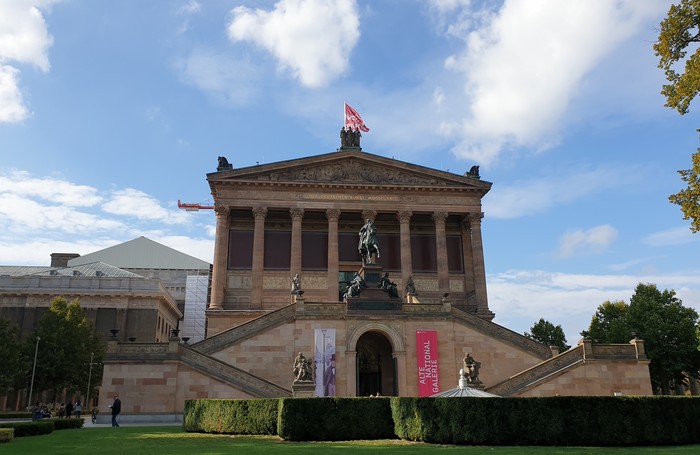
Museum Island Berlin: ALTE NATIONALGALERIE
Built between 1867 and 1876 according to a design by architect Friedrich August Stüler and inspired by the majesty of the Acropolis of Athens and its famous staircase, the Old National Gallery houses masterpieces from Classicism to the modern era. Of particular importance and great charm are the romantic section dedicated to Caspar David Friedrich and the French Impressionist section.
Museum Island Berlin: BODE MUSEUM
The Bode Museum is famous for its collections of Byzantine sculptures and treasures, as well as for a rich numismatic section. Its harmonious rounded architecture, lapped by the waters of the Spree river, was built between 1887 and 1904 and bears the name of the art historian Wilhelm von Bode, the true soul of the Museum Island and a great Italophile: to him we also owe the section of Renaissance works kept in the museum.
Museum Island Berlin: PERGAMON MUSEUM
Pergamon Museum in Berlin The Pergamon Museum welcomes one million visitors from around the world every year and is therefore the most visited exhibition venue in Berlin.
Inaugurated in 1930, the museum is the work of the architect Alfred Messel and was created to preserve artifacts found by German archaeologists in the 19th century. The most famous of these is certainly the Altar of Pergamon. Also not to be missed are the imposing Market Gate of Miletus and the splendid Ishtar Gate.
HOW TO GET TO MUSEUM ISLAND
– By metro: Alexanderplatz station;
– By bus: Lustgarten stop (Bus lines 100, 200, 245, 300);
– With our private guided tours ESSENTIAL BERLIN, ALL OF BERLIN or BERLIN BY BIKE.

